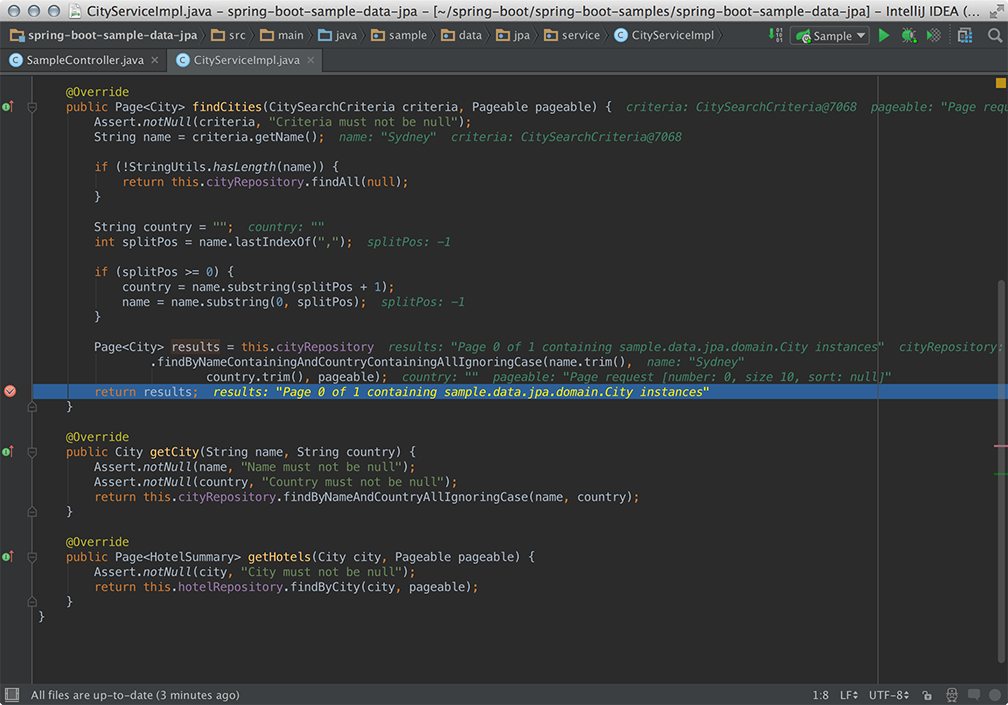
If you want to know VIM basics, I wrote a post on it some time back.
#Pycharm vs intellij code#
Once you get used to them, your editing and code navigation speed is easily multiplied 2X and it’s so easy to use it within IntelliJ. To start with, did you know all Jetbrains editors come with a very good VIM support via IdeaVim plugin? Vim commands are amazing. To demonstrate these features, I would be using appium Java client project but the same features can be applied in any Java/Kotlin (IntelliJ IDEA) project of your choice or Python project (In Pycharm). I got to know some of these features when the prolific Dev evangelist Hadi Hariri from Jetbrains visited Gojek Bengaluru and shared these during a meetup. This post will share some awesome tips that you can also follow to become more productive with your editors.
How many of the IDE’s features do we really use on a day-to-day basis?. Do we really extract the maximum juice out of these tools?. This is my breakdown in the past two years: If you’ve used IntelliJ, then ppen up IntelliJ > Help > Productivity Guide and see how much time it has saved you. Personally, I am a big fan of IDE’s provided by Jetbrains, and they are generally my tools of choice-saving me a ton of time while performing refactoring and greatly decreasing development time. However, the truth is most modern devs in this day and age use/prefer IDE’s for the host of convenience features, speed, and flexibility they provide. Purists generally rave about the use of Editors like Sublime, VSCode or even use of Vim/Emacs over full-fledged IDE’s like Jetbrains IntelliJ, Pycharm or Eclipse. After the programming language, a very important component for the dev workflow is a good IDE. Sys.path consists of various directories and the paths in the optional environment variable $PYTHONPATH.I do the bulk of my test automation development in Kotlin/Java or Python languages. I hope this helped save anyone who googled here at least the amount of time it took to read this. Pass # path might not have been added to sys.path Luckily pytest has the incredibly flexible concept of fixtures that makes it trivial to revert unwanted PYTHONPATH additions. Nevertheless I prefer a situation where fail-fast will definitely happen, and not by the mercy of having unchecked the right boxes in a configuration screen. Of course we discussed these findings in our team chat. Don’t control all the IDEs, control the project Our project is loosely based on the Cookiecutter Django project template so these defaults likely impact more projects. Interfere less by default seems the more defensive (meaning: better) strategy here, but I might be overlooking something. I’m not sure what the case would be to have these on by default, as eventually code has to run outside of the IDE. This is the one that masks the import errors as ‘api’ and ‘config’ folders were marked as source roots. Herein lies the problem, as for both the default is to add source roots to PYTHONPATH. IntelliJ preferences Configuration defaultsįinally, there are per-project configuration defaults for ‘Django server’ and ‘py.test’. Source roots is off by default so that’s good. In the application preferences there are options to add content roots and source roots to the python console and django console. Project configurationįirst of all there is the project configuration that determines what are the ‘content roots’ and the ‘source roots’ (See P圜harm’s content root documentation). Looking into the configuration options in IntelliJ, there are several places where adding of directories to PYTHONPATH can be configured. Project layout is as follows: (api-2) $ pwdĬomparing sys.path from the command line and from code run by the IDE showed that in the IDE the directories /Users/./api-2/api and /Users/./api-2/config were added to the PYTHONPATH 1. 
Tests failed when run from the command line also but as most of our team uses either P圜harm or IntelliJ to run the test suite, it was clear that there was some issue in how we set up our projects in those IDEs. That’s why it was quite annoying that the unit tests we write to signal these mistakes quickly, only started failing on the CI system.

As it turned out all of the failures where related to import errors and were caused by developers accidentally importing relative to the main django application instead of the project root. In a project we’re working on we recently witnessed quite some builds fail on unit tests that apprently passed on local development environments. TL DR: P圜harm and IntelliJ have some odd defaults that can mask mistakes until they hit CI.






 0 kommentar(er)
0 kommentar(er)
